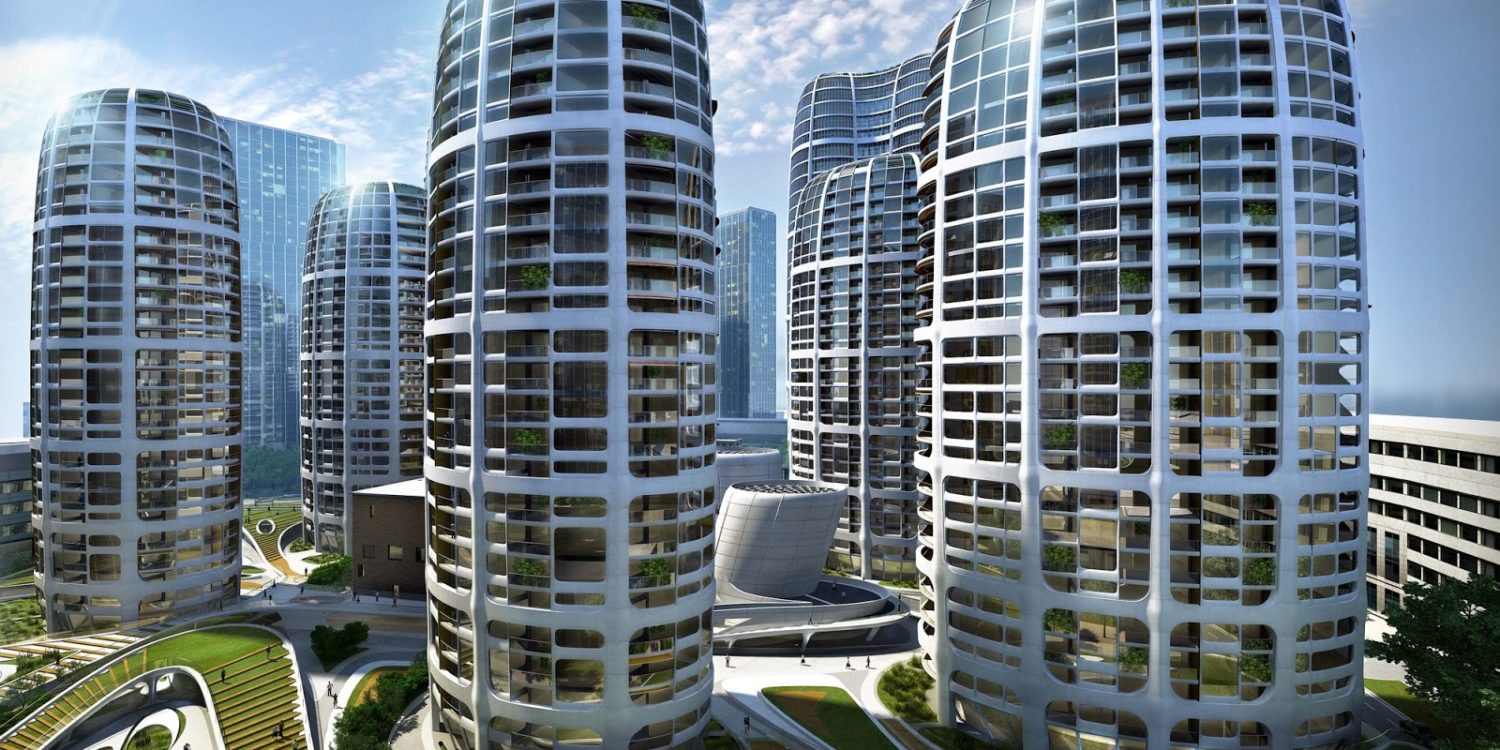For the article “The Day Architects Stopped Reading Newspapers” we made a selection of “Architects’ Descriptions” from the biggest architectural blog in the world: ArchDaily. Here is a selection of the most dubious quotes around three Usual Suspects: ‘context’, ‘public space’ and ‘sustainability’.
The article is followed by a response to the comments of editors and authors of ArchDaily on Twitter and Facebook.
On Context
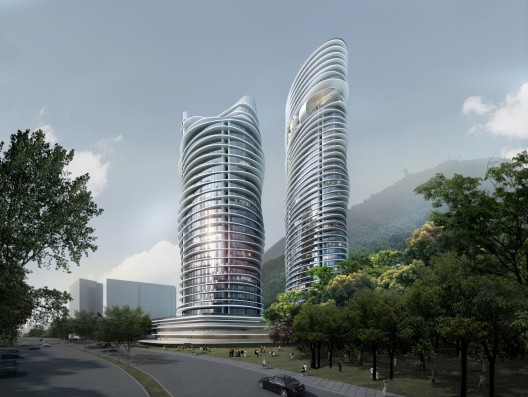
Arte’s Towers – Spark Architects
“The geometry and composition of the towers is inspired by the dramatic surrounding land and seascapes mediating between the steeply rising verdant mountain and the flowing currents of the Malacca Straits.”
Arte’s Towers – Spark Architects – ArchDaily 2013
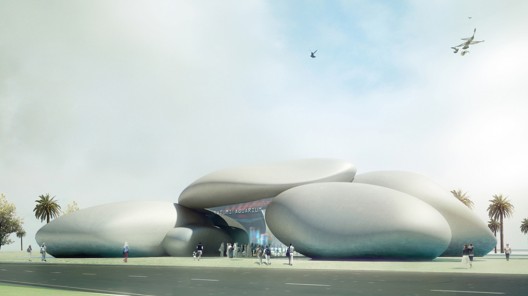
Batumi Aquarium – Henning Larsen – ArchDaily 2010
“Batumi Aquarium is inspired by the characteristic pebbles of the Batumi beach – the residue of dynamic seas continually shaping the shorefront throughout millennia. The building will be situated in the Georgian port of Batumi and will stand out as an iconic rock formation – visible from both land and sea.”
Batami Aquarium – Henning Larsen – ArchDaily 2010

Zhongwei Cultural Complex – HO&Partners – ArchDaily 2013
“The contemporary design of the main centres aims to characterize the city’s modernization, whilst capturing local cultural references. The building facades pay homage to local stone paintings and weaving patterns of sand-barriers found in regional deserts. Building materials further associate with local surroundings through different textures and colour palettes.”
Zhongwei Cultural Complex – HO&Partners – ArchDaily 2013
On Public Space
“Small decisions draw the line between a more communal versus a typical residential building. Take, for instance, the idea of allowing all apartments to share a single large lobby surrounded by a 2000sqm shallow body of water accessed from four separate circulation cores. Every time a resident comes home he is reminded of nature’s presence and welcomed by a crowd of people inhabiting the populated structure.”
Beirut Terraces – Herzog&DeMeuron – ArchDaily 2013
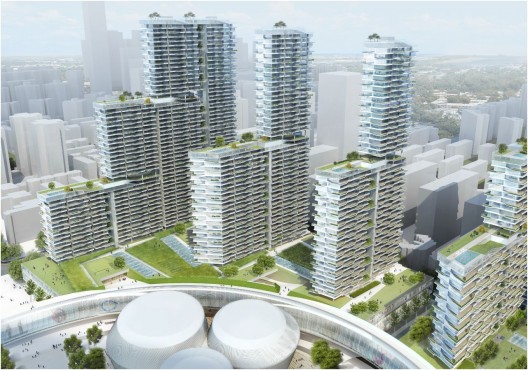
Hanking Nanyou New Town – Jaeger&Partner – ArchDaily 2012
“The design aims to establish community character through the creation of a three-dimensional urban space that provides its users with ease of access to living, leisure, culture, and work.
The design process included considerations to retaining historical and cultural aspects of the site. The project implements an interlaced grid system that blends the current orthogonal urban fabric to a historical diagonal axis. Furthermore, the site’s current educational and hospital facilities are preserved as they are integral to communal development. Lastly the introduction of new cultural elements and the transformation of old housing into an Art Village greatly enrich the urban atmosphere.”
Hanking Nanyou New Town – Jaeger&Partner – ArchDaily 2012

Bratislava Culenove New City Center – Zaha Hadid – ArchDaily 2013
“The design for the Bratislava Culenova New City Center by Zaha Hadid Architects is based on a dynamic field strategy which aims to organize the city’s new city center program along a gradient of circular and elliptical patterns. In a series of larger tower extrusions, a fluid field emerges from its underlying matrix to activate the ground throughout the whole site and provide public spaces of the highest quality.”
Bratislava Culenove New City Center – Zaha Hadid – ArchDaily 2013
On Sustainability

Trans Ganga Masterplan – Studio Symbiosis – ArchDaily 2012
“Sustainable city design has been imbibed in the planning at two levels. Firstly at the design level elements required to make a city sustainable have been grafted in the master plan. Secondary at the implementation stage green roof, earth cooling, solar panels, ground water recharge, waste management have been proposed.
At the heart of the master plan an auto expo is located, sitting amidst the central green. The auto expo is designed as an iconic building creating a prominent visual marker”
Trans Ganga Masterplan – Studio Symbiosis – ArchDaily 2012
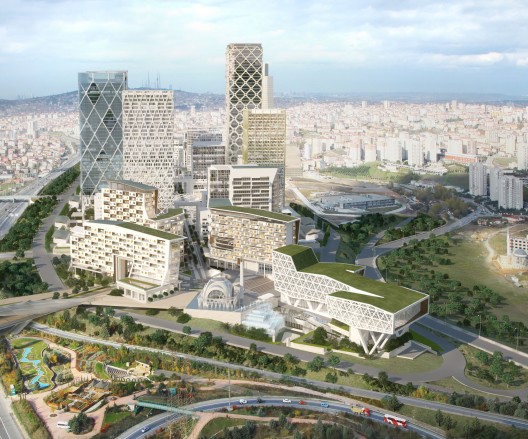
New Istanbul International Financial Center – HOK – ArchDaily 2013
“The architects are honored to have the opportunity to plan a world-class financial center in Istanbul – a city that historically has been such a dynamic global center for commerce. Their master plan provides a framework for developing a sustainable financial center in a way that blends human need, environmental stewardship and economic viability into a new global model of urbanism rooted in Turkish culture.”
New Istanbul International Financial Center – HOK – ArchDaily 2013
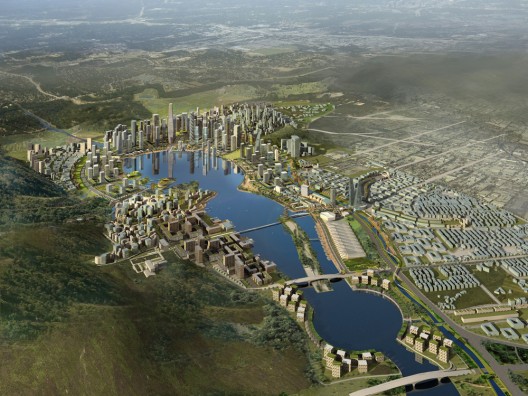
Meixi Lake New Town – KPF – ArchDaily 2012
“The master plan seeks to establish a paradigm of man living in balance with nature. A densely concentrated urban plan, packed with a full variety of functions and building types, is integrated with mountains, lakes, parks and canals, resulting in an environment that promotes both health and prosperity.”
Meixi Lake New Town – KPF – ArchDaily 2012
— Update: Response to ArchDaily, 13th of April 2013 —
A few days ago, editors and authors of ArchDaily responded to my critical take on the website’s contents, stating that ArchDaily has more to offer than the project descriptions and promotional talks on which I focused in my article. I would like to emphasize here that I did not say everything on ArchDaily is bad. However, I do think ArchDaily highlights too many bad projects, cheesy renders and bombastic promises, often without any critical note by the website editors (see the examples above).
Unfortunately, the frequency of bad content blurs my view on the more informed and critical articles ArchDaily publishes. It is rather unclear whether I am reading ArchDaily’s selection of ‘best practices’ (what are the criteria for republishing project descriptions?), or an architectural firm selling their product.
Of course I understand that it is exactly this high frequency of content that makes the site so well visited – and the articles so well read. The consequence of this working method however is that the critical views blur in with some low quality selling-talk.
We might argue ArchDaily is more like a popular newspaper: showing what happens in the world by publishing a mix of opinion articles and simple news facts from news agencies, edited by a team of well-informed and experienced reporters and journalists.
But unfortunately this is not what ArchDaily does. The project descriptions lack a crucial element: critical journalism. If the editors do not engage in fact checking and source analysis but simply publish project descriptions written by the architects themselves, then the worst projects can sound like heaven – and ArchDaily’s mission of educating and inspiring is endangered. To put it bluntly: every editorial board, blog or newspaper is as good as its worst article.
And that is why I did not criticize all content on ArchDaily, but highlighted those posts that never should have been published without a critical attitude. When taking into account last year’s mission statement by the founders of ArchDaily, I think there is room for improvement.
